Minimalism for moms – how to make mom life easier
As a Scandinavian, I was brought up with minimalism. For me, simplicity, hygge, and practicality is a way of life and has made things easier as a mom.
That’s why I’ve created this comprehensive guide to minimalism for moms.
If you want to:
- Feel less stressed and overwhelmed
- Stop living on autopilot
- Have more time for what matters
Then you’ll love the detailed strategies in this guide.
Let’s dive right in.
Read next: The ultimate minimalist baby registry
This post contains referral links for products I love. Danish Mom earns a small commission at no extra cost to you if you make a purchase through my links. Thank you for your support ♡
Table of Contents
Minimalism for moms
First, let’s take a look at what minimalism is and its main benefits.
What is minimalism?
Minimalism is a lifestyle focused on minimizing clutter so you can have more of what matters. It means finding out what’s essential to YOU and intentionally focusing on the things you value most.
In short: Minimalism is intentionally living with only the things you value.
What is a minimalist mom?
Emotional and physical clutter can make a mama feel angry, tired, and overwhelmed. It can make the days feel long, and you may feel like you live your life on autopilot.
As a minimalist mom, you make intentional choices for your family every day. Like the clothes you buy, and what you spend your time on.
Minimalism makes your life easier because there’s less chaos and clutter. And by clutter, I mean toys, laundry, dishes, overworked schedules, and the worries and anxiety that go with it.
The more people in your house, the more stuff and appointments you tend to have. So, minimalism with kids actually makes a lot of sense!
Read next: 10 simple ways to be a happy, minimalist family
What minimalism is NOT
There are a lot of misconceptions about minimalism that can make it seem restrictive and hard to relate to. And that can put you off from even trying. That would be a shame, so let’s get it straight:
Minimalism is a tool to help you create the life you want.
Minimalism is not:
- Living by a set of rigorous rules
- Throwing out all your family photos
- Selling your car and favorite purse
- Getting rid of stuff that actually makes your life easier (I’m looking at you, iPhone)
- Having an all-white home with only a few pieces of furniture that look uninviting and cold
- A competition of who is a better minimalist – there’s no such thing!
3 key elements of minimalism
There are three steps towards a minimalist lifestyle.
- Learn to live intentionally
- Declutter
- Do more of what matters
We’ll dig deeper in a minute. First, let’s take a look at the benefits of minimalism.
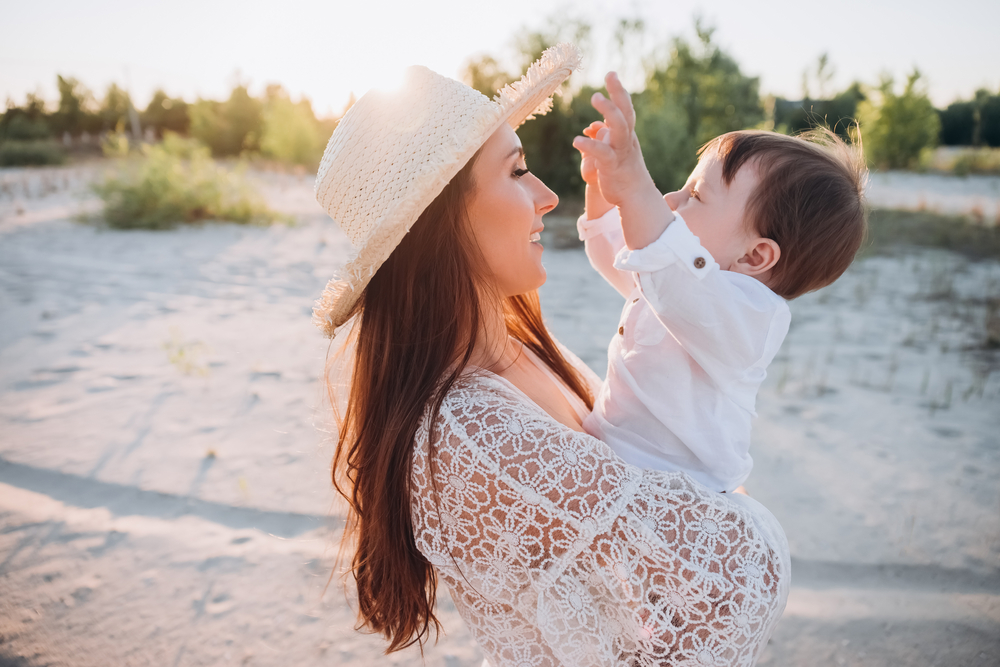
What are the benefits of minimalism?
Minimalism can help you identify the things that aren’t important (and the things that are).
If you’re open to it, minimalism can change your life and make you a happier mom. Here are just a few of the benefits I experience in my own life:
A clutter-free home
The most known benefit of minimalism for moms is a clutter-free home. Think about it. Fewer toys mean fewer toys to pick up, fewer clothes mean less laundry and less stuff ultimately means fewer chores. This is a huge plus as a mom because we so easily feel like we’re drowning in laundry and toys.
Less stress
Multitasking, cleaning up, and shopping are all natural components of being a mom (raising my hand here). If you feel stressed or burnt out, a minimalist lifestyle can give you more mental bandwidth.
Imagine how much happier you’ll feel with only 50% of all the toys lying around or if you deleted 30% of the activities in your kids’ (and your own) calendar.
More time
Minimalism is by no means a ‘fix it all’ lifestyle. But it can help you identify and face the triggers in your life.
As soon as you start clearing out the things you don’t really need, you’ll ultimately free up time to do what matters. I don’t know about you, but I like to spend it on family hygge.
More outdoor play
When you bring minimalism into your family, your kids will have less stuff, too. This means they go outside more, use their imagination more, and get more exercise. It’s a win-win!
Mama is happier
My FAVORITE benefit of minimalism for moms is that it makes you feel less stressed and overwhelmed. I think most of us on some level strive to be the world’s best mom and to be everything to our family, which is exhausting.
You can’t win.
Being responsible for less stuff and activities helps you see the unrealistic expectations you’re holding on to.

Simplify life
Becoming a minimalist family is about simplifying your life. When you simplify, you ultimately make life easier.
How to live a simple life
When people hear “simplify your life”, they often think they need to get rid of all their possessions and deprive themselves of the good things in life.
But that’s not what I mean by simple living.
Simple living is about reducing the things in your life that cause you stress and filling it with value.
So, yes, you will get to throw out some of your things, but ONLY what doesn’t bring you joy. For instance, if it makes your life easier to own an iPhone that keeps all your info and daily tasks in one place, then you should hold on to it.
Again, it’s about having things that matter. Not just about owning less for the sake of it.
Personally, I define simple living as restoring a healthy balance in your life. I don’t need to move off the grid and be self-sufficient to live simply.
To me, it’s more about enjoying the little things, hygge, smiling, and laughing every day, and filling my life only with stuff, plans, and people that make me happy.
But living simply can mean different things to different people. There’s no right or wrong way to do it.
What’s the difference between minimalism and simple living?
Minimalism and simple living share so many characteristics that it’s easy to confuse the two. However, there are a few differences between the two that are important to note.
Minimalism is about owning possessions whereas simple living is broader.
People who want to live a simple life are driven by an overall life of well-being. This may or may not include stuff. Minimalism, on the other hand, always includes the act of having fewer things.
Simple living is almost always centered around reconnecting with nature (like cooking your own food, living sustainably, or spending more time in nature), whereas minimalism is more aesthetically driven.
For instance, a minimalist would prefer an open, clear space with lots of natural light in their home rather than trading city for country life.
Simply put: You can live a simple life without being a minimalist – and the other way around.
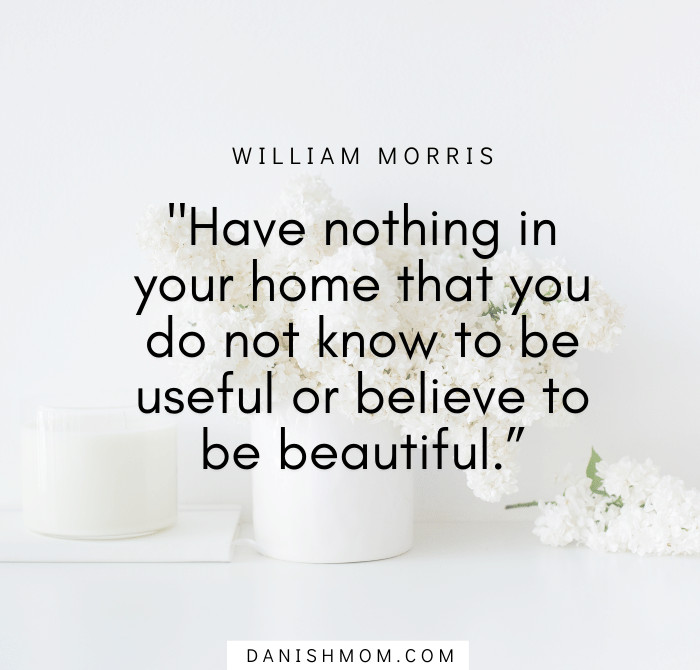
Intentional living
Living a minimalist life requires intentional living. When you live intentionally, you know your core values and live your life according to those values.
Living on autopilot
Ask yourself this:
Does life just happen to you? Or do you make life happen?
When you live on autopilot, you make decisions (both big and small) without putting in any thinking. You base your life on what everyone else is doing and either daydream or have a niggling voice that tells you to be someone else.
While living on autopilot is efficient for some everyday tasks, like when you shower or unload the dishwasher, YOU need to get back in the driver’s seat to live a happy life.
Signs you’re living on autopilot:
- Your routine is predictable and there’s no room for last-minute changes.
- You let other people’s expectations define your choices.
- You say yes, more than you say no.
- You are always on – always busy or elsewhere in your mind.
- You automatically check your phone and social media for updates (even though you just checked)
- You feel time flies; like you haven’t accomplished much.
- You feel like you’re missing out on life.
If you resonate with any of this, there’s a good chance you’re living on autopilot. The good thing is that you can get your brain off autopilot and train it to wander less.
How?
By living intentionally and making deliberate choices. And that’s minimalism in a nutshell.
What’s your why?
To make intentional choices, you need to ask yourself why.
- Why do I want that purse?
- Why do I want to have kids?
- Why have I chosen this career?
- Why am I with my partner?
Some of these questions are deep and the answers can be scary. But living with intention is not about having everything figured out. It’s about knowing the reason behind your choices so you can make the right ones.
To do that, you need to begin by identifying your values and what’s important to you.
Identify your values
Everyone’s core values are different. Mine, for example, are family time, traveling, creativity, freedom, and independence. See if you can find three to five values that are important to you. There are no right or wrong answers, but you do need to be honest with yourself.
Your values are like an inner compass. Once you know them, they’ll guide you, because they ARE you.
Accept responsibility
One of the most important lessons you can learn is that your life is made up of choices. And while we are not always responsible for the circumstances that life throws at us, we ARE responsible for how we react.
Once you accept that, you take ownership of your life, and that’s when the magic happens. It takes courage. And you will need to make some tough choices, but you have the power to change.
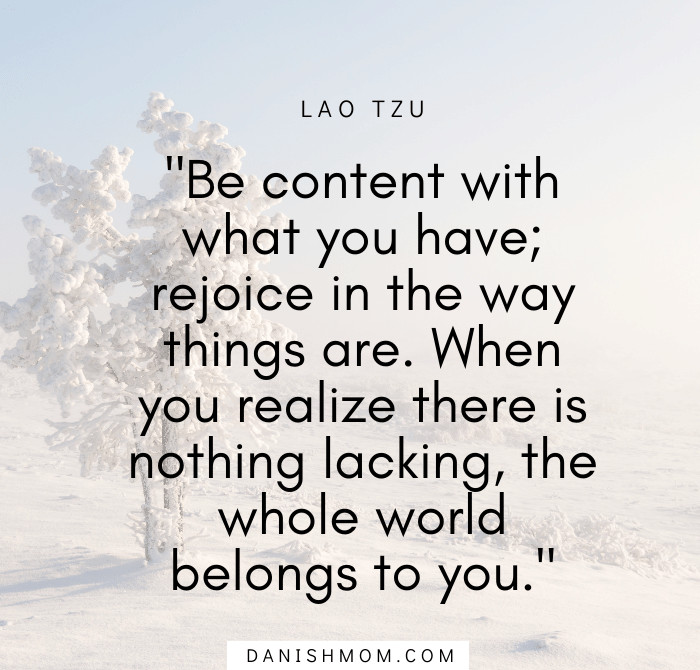
Where do I start to become a minimalist?
So, now we know the mindset behind minimalism.
It’s time to get practical.
How to become a minimalist parent
Whether you’re a beginner to minimalism or in the middle of decluttering, it’s common to feel overwhelmed.
Don’t worry. It will get easier in time.
Before we get to the how part, let me just say that there’s no right or wrong way to be a minimalist mom.
It’s simply about removing distractions so that you can do more of what matters. So, my best advice to you is to find your own version and let go of the rest.
1. Get a minimalist mindset
We’ve talked about intentional living and defining your values. Once you know what’s important to you, it’s easier to identify the things that add value – and which don’t.
Minimalism is not just about getting rid of stuff and painting all your walls white. It’s first and foremost about having a mindset of consistently identifying and actively removing distractions from your life. And to maintain it.
2. Find a decluttering strategy
When you know what’s important to you, you can begin decluttering your home and your life. There are many ways to declutter, and it can be intimidating when you just start.
That’s why it’s best to find one method and stick to it. Once you’ve got the hang of it, you can switch it up.
Some of the more popular decluttering methods include:
- KonMari (Declutter by category – not by location – beginning with clothes, then moving on to books, etc.)
- Minimalism Game (Challenge a friend. Each person gets rid of one thing on the first day of the month. Two things on the second and so on.)
- Reverse clothes-hanger method (Turn all the clothes hanging in your closet so that the hangers face back-to-front (wrong way round). When you wear something, put it back with the hook the normal way. After six months, any hanger that’s still the opposite way is clothes you don’t need.)
3. Do more of what matters
You know the minimalist way of thinking and you have started to declutter. Now, it’s time to reap the fruits.
The final step of minimalism for moms is to do more of what matters. What that is differs from mom to mom. Mine for instance is to spend time with my family, to cook and bake with my oldest son, and simply relax.
How I’m a minimalist mom
I was born and raised in Denmark, a small Scandinavian country that’s consistently ranked as one of the world’s happiest. Minimalism taps into our everyday life here and permeates who we are – design, interior, and habits.
It’s a way of life rather than a lifestyle. So, I don’t consider myself a minimalist although you’d probably define me as one. In fact, I think most Danes don’t even know what minimalism is 🙂 It’s just who we are, and intentional living comes naturally to most.
Scandinavian minimalism is slightly different from classic minimalism. It’s about buying less and buying better – but with a focus on functionality and hygge.
This is what Scandinavian minimalism with kids means in my life:
Sustainability
At our house, we mostly eat unprocessed, organic food, we teach our kids about recycling and we go for sustainable, natural products (for instance when I shop kids’ clothes, sheets, furniture, and household supplies).
Quality over quantity
I buy quality rather than quantity, so most of our furniture is bought to last.
When we buy kids’ stuff like clothes, high chairs, beds, or toys, they’re also high quality, which means we can resell them or pass them on to friends and family.
Functionality
Scandinavian design is created with functionality in mind – it’s practical. Yes, it’s pricey compared to cheaper options, BUT it will last and it makes our lives so. much. easier.
We bought Theo a Nomi highchair for instance. It’s designed to grow with the child so he has used it since he was 5 months and can use it until he’s 10 years old. It’s the same with his Juno bed.
It’s a baby bed that can be transformed into a kids’ bed, which he can use until 11-12 years old. We bought it used, which made it more affordable.
Clean design
I prefer a simple home with calm, neutral tones. Lots of natural light, green plants, clean lines, and plush, chunky cushions, and blankets. I guess you can call this boho hygge.
Hygge
This is probably where Scandinavian minimalism differs the most from standard minimalism. Hygge (comfort) is something I enjoy at home either on my own or with my family.
I like to keep my home neat and decluttered not just for the sake of it. But because it creates a peaceful and relaxing space for my family.

Combat clutter
Decluttering is where most people begin with minimalism. It’s how you remove things you do not need from your home or mind. Decluttering is about making space in your life for what matters.
I recommend using a decluttering method like the ones mentioned above and then asking yourself this in the process: Is this item bringing me joy? Or as a minimalist mom: Is this item bringing my child joy?
Toys
Speaking of… we could all spend less time weeding through piles of toys, amirite?
A few weeks ago, I took some of Theo’s toys and put them away. It’s a toy rotation trick I learned from my mom. She would store some of the toys and then swap them every few months, and we always felt like we got a new set of toys. It’s pretty genius.
Toy rotation is a good way to declutter the toys because you find out if your child really needs them. It’s also an opportunity to weed out toys your child has outgrown.
Clothes
As moms, we tend to hold on to our kids’ clothes. But the more clothes they have, the more we have to store, wash, and keep organized so we can actually find it when we need it. And in reality, they don’t really need as much as we think.
For the best results, you should declutter first and then organize.
What works for me and the kids (hubby has his own thing 😉 ), is to have a capsule wardrobe. That means we each have a curated selection of clothes for each season that we mix and match. It’s an easy way to keep your wardrobe simple and minimalist.
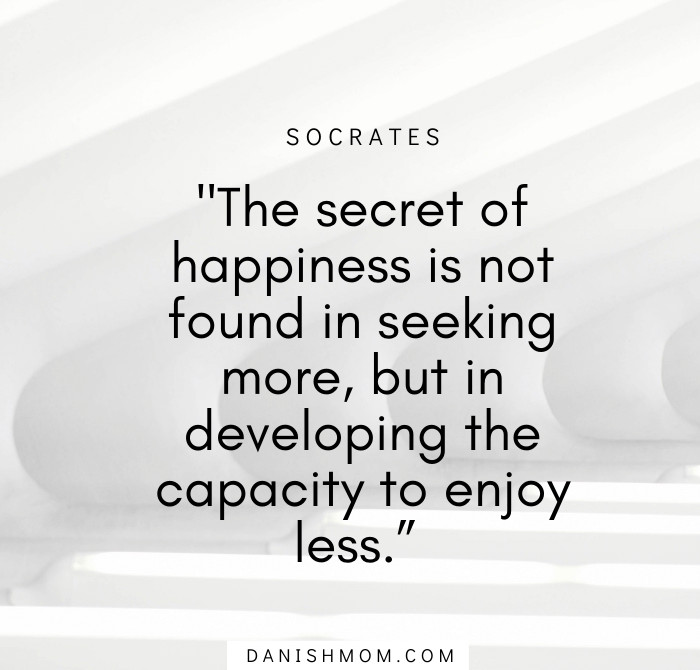
How to get your family on board
Husband first, kids after
The first one to get on board is your partner. Make sure you’re on the same page so you stand united in this. If he’s not interested in a minimalist lifestyle, don’t worry.
It makes it easier if he is, but there’s a way around it if he isn’t. You just need to agree on some ground rules for buying toys and clothes.
Maybe you can be in charge of organizing the kids’ clothes and toys. Then explain the system (which toys/clothes go in which box/shelf) so he can help reinforce it.
You don’t need to be a minimalist to see the logic in keeping your home uncluttered and tidy.
Lead by example
Living out minimalism with your family starts with you as a parent. You need to lead by example, and then your kids will follow.
Start by decluttering your closet and then talk to your kids about why you’re doing it and how it makes you feel.
Make time to declutter
Make it a habit to declutter with your kids. We let our oldest son pick out the toys he doesn’t want anymore. You don’t have to do this every week. But every few months is a good idea.
Holidays and gift-giving
The holidays and birthdays can be a challenge when it comes to being a minimalist mom.
Maybe your family loves to shower your kids with presents and toys. Gift-giving is so nice and generous, but it can result in a lot of stuff.
We get around this by being specific with our wish lists and ONLY include things and toys they need and really want. We prefer to give larger gifts (like an iPad or bicycle) than many small gifts. If it’s expensive, we go in on the gift together with grandparents or other family members.
Opening gifts can quickly turn into a chaotic whirlwind of torn paper and the kids don’t even see what they got before they’re onto the next gift. I try to teach my kids the importance of appreciation and gratitude.
So, my oldest son opens one gift, examines it, and then says thank you, before he moves on to the next.
Advice for moms who want to begin living a minimalist lifestyle
Embracing minimalism with kids can be difficult in the beginning. It’s a mindset after all, and there’s a lot of getting used to. Especially when you start looking into your values and discover what you might not need in your life.
But I want to tell you this: There’s no right or wrong in minimalism. It all comes down to what makes sense to you. That’s basically the essence of it.
I hope you find your way ♥
FAQ – Minimalism for moms
What is the 90 90 rule for minimalism?
The 90/90 rule for minimalism is a guideline suggesting that if you haven’t used an item in the past 90 days and don’t plan to use it in the next 90 days, you should consider getting rid of it.
This rule is designed to help declutter and simplify your possessions. For more details, you can refer to the explanation by The Minimalists.
What is the 1 in 1 out rule minimalism?
The 1 in 1 out rule in minimalism is a strategy to maintain a clutter-free environment by ensuring that for every new item you bring into your space, you get rid of another one.
This helps to prevent accumulation of possessions and encourages thoughtful consumption. For a deeper understanding, you can read more about it in this article on minimalist living.
Is minimalism good for ADHD?
Yes, minimalism can be beneficial for individuals with ADHD.
A minimalist approach can help reduce distractions in the environment, making it easier to focus and manage ADHD symptoms.
Having fewer items to organize and clean can also reduce the feeling of being overwhelmed, which is common in people with ADHD.
For more insights, you can read about how minimalism can reduce ADHD symptoms and how it can be ADHD-friendly.
Can you be a minimalist and have kids?
Absolutely, you can be a minimalist and have kids.
Minimalism with kids involves teaching them about the value of experiences over possessions, encouraging creativity with fewer toys, and maintaining a clutter-free space that can benefit the whole family.
It’s about finding a balance that works for your family and focusing on what’s important.


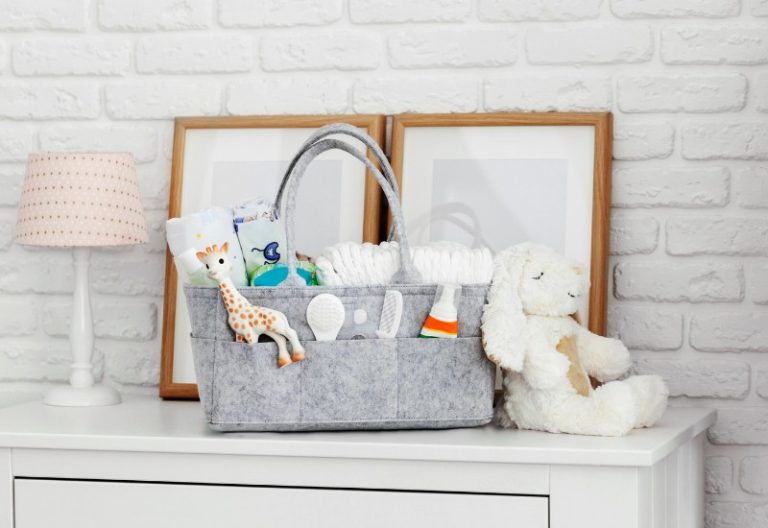

I love this!! I’m so glad I found your site. Living intentionally and simplifying life is something I know will make me happier and a better parent. I can’t wait to read more!
So glad to hear that, Maggie!
Thank you for this article. I’m a mom to a 5 month old boy and sometimes feel suffocated by consumerism.. this is a good reminder and talking point for my husband and I. Thank you
We have all been there, Kelsey. Minimalism makes it all lighter and easier, I feel it in our family.